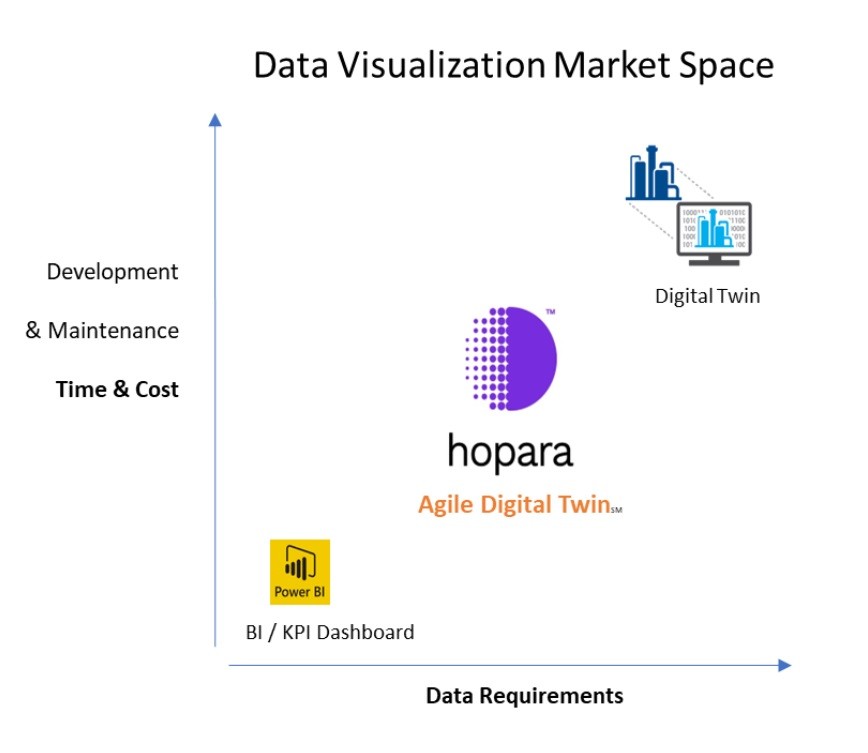Avoiding Three Digital Transformation Pitfalls: How an Innovation from MITs AI Lab Turns Failure into Success

Bill Hobbib
July 6, 2023
Digital Transformation and the utilization of Digital Twins have brought about a paradigm shift in how companies harness the power of their data. However, according to Gartner, fewer than 20% of these projects achieve the desired return on investment (ROI). In order to understand the reasons behind this, we must examine three common pitfalls that organizations encounter during digital transformation initiatives.
- Unclear Digital Transformation Goals and Digital Capabilities: Companies often struggle with accurately assessing their digital capabilities, leading to overestimation or underestimation. Overestimating capabilities can result in project delays and resource exhaustion.
- Lack of Agility and Iteration: Flexibility and iterative approaches are critical in the digital transformation journey. Failure to embrace agility can impede progress and hinder effective decision-making.
- Digital Exhaustion: Prolonged projects can lead to digital exhaustion, where the momentum and energy diminish over time, becoming a major obstacle in the decision-making process.
To ensure the success of any digital transformation project, clear goals, a defined path to success, and a significant ROI are essential. It is crucial for digital transformation professionals to question the potential gains or losses and calculate the tangible value that will justify the investment. Unfortunately, many projects struggle to reach a point where the benefits outweigh the costs, as they require substantial financial resources and extensive development time, during which the underlying factors driving the project may have significantly changed.
 Simultaneously, while companies are amassing vast amounts of data, particularly through IoT sensors, traditional business intelligence (BI) and key performance indicator (KPI) dashboard tools are struggling to handle the volume. How can organizations effectively visualize their data, akin to a Google Map, leveraging custom canvases such as floor plans, connecting to multiple real-time databases, and enhancing user experience to boost data utilization in daily tasks? This question led Professor Mike Stonebraker, 2014 Turing Prize winner and Professor at MIT’s AI Lab (CSAIL), to pioneer the concept of Agile Digital Twins.
Simultaneously, while companies are amassing vast amounts of data, particularly through IoT sensors, traditional business intelligence (BI) and key performance indicator (KPI) dashboard tools are struggling to handle the volume. How can organizations effectively visualize their data, akin to a Google Map, leveraging custom canvases such as floor plans, connecting to multiple real-time databases, and enhancing user experience to boost data utilization in daily tasks? This question led Professor Mike Stonebraker, 2014 Turing Prize winner and Professor at MIT’s AI Lab (CSAIL), to pioneer the concept of Agile Digital Twins.
Agile Digital Twins are digital representations of physical objects or analog processes that can seamlessly connect to real-time operating data, such as IoT sensors, within an engaging and user-friendly environment. By combining the principles of Agile Development with significantly reduced data requirements, Agile Digital Twins deliver highly effective SaaS applications in a fraction of the time and cost typically associated with full-scale digital twins.
Key features of Agile Digital Twins that deliver an order of magnitude benefit to companies launching or refining a digital transformation project:
Minimized requirements to build
As compared to traditional digital twins which require a substantial up-front data investment to get started, Agile Digital Twins have minimal requirements to build. For example, 3D simulations are not required with an ADT, instead you can start with a 2D model and then add 3D when it’s needed.
Low-code approach
While standard digital twins require a high level of technical skills to implement and some level of coding, Agile Digital Twins can be built with most or all of the work completed without coding. This shortens development time and lowers the skills requirements, both internal and external.
Infinite, rapid adaptability
Unlike traditional digital twins which are in development for many months or years, ADTs can be updated and adapted as quickly as business cycles change. You have the ability to customize every aspect of the ADT from the start, and then add new data feeds such as IoT sensors or expand to add new locations without re-coding the entire project.
Advanced drill-down
ADTs offer a blazingly fast path from the highest-level of abstraction to the most granular details when required in just a few clicks and fractions of a second. Users see only the data they need for that level of view without being distracted by data or views that don’t add to decision making. Data is presented in a ‘single pane of glass’ to view the entire operation spanning multiple sites and thousands of assets or more, with drill down into the details of a single asset.
Don’t just take our word for it. Experience the power of Agile Digital Twins firsthand by contacting us for a live demonstration. Together, let’s unlock the potential of your digital transformation journey.
